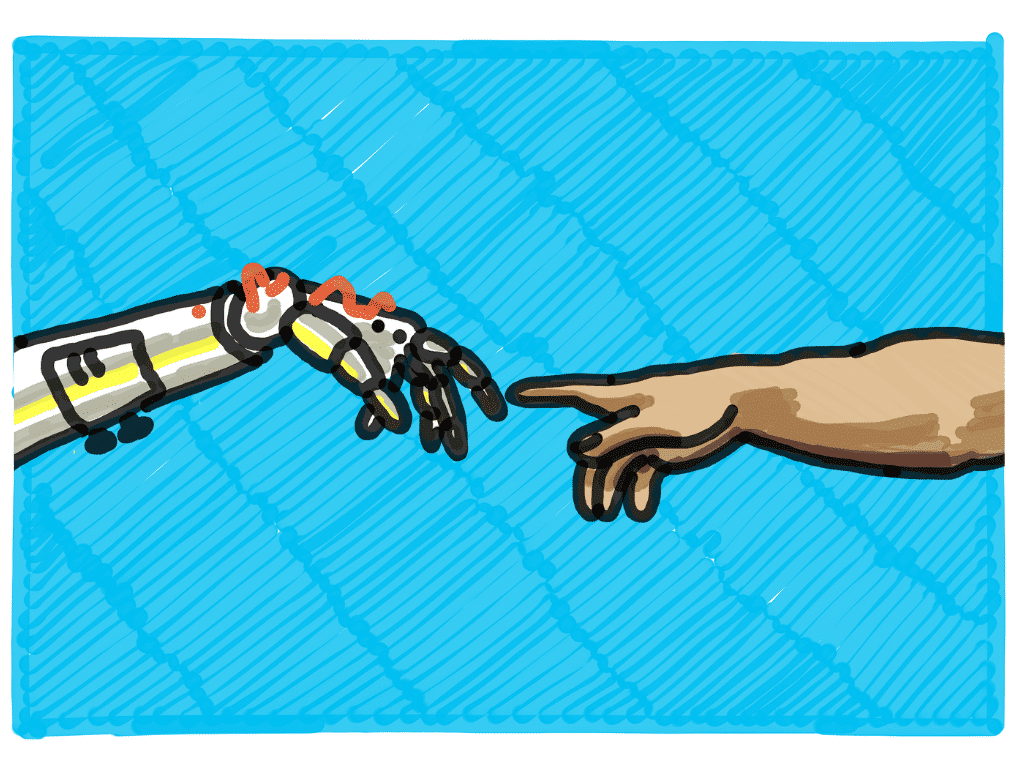Increase understanding and engagement
Employee engagement is not always understood in the same way. Science defines the term as the mental and emotional state that influences behavior in terms of organizational results. Employee engagement is therefore the emotional attachment of employees to the goals and values of their organization. It is reflected in the effort and satisfaction of each employee.
We want to achieve a positive influence on this inner attitude. How to do it? We have 5 smart steps for you. So that you and your team can work more motivated on goals.
The following five methods are best combined to achieve the strongest effect. This way we create the best situation for Employees and companies.
#1 Transparent decisions
How you and your team handle goal setting, decision making, and planning is one of the most essential factors in employee buy-in. Because when we perceive activities and tasks as meaningful, it can increase our engagement. This can be encouraged through involvement in the decision-making process or through open exchange with each other. All of this increases acceptance within the team and thus leads to better workflows. You don’t feel like a cog in the big machine, but hold the importance of your own performance high.
If, on the other hand, decisions are made and power is exercised behind closed doors, the team feeling is reduced and with it the general level of commitment. After all, it is a matter of achieving the goals together. Only when the team is actively involved in decision-making processes and goal setting, and these are discussed transparently, does the motivation to contribute arise.
#2 Connect common goals
Only those who have a goal in mind know where they are going. Studies show that simply defining goals – without an additional financial incentive – can increase employee performance by up to 15 percent. To set appropriate goals together with the employees to keep track of the skills in the team and the overall development. In addition, this common goal also has a very motivating effect – for the leader and the team. This can increase engagement – for all sides.
Discussing together what goals are actionable and how they can be measured can be a powerful boost to employee* engagement. This works for a long time if the progress is also regularly discussed on a regular basis. Especially long-term goals, which take up a larger time frame, need a regular check. So that the employees themselves can also be satisfied with their performance.
- Set goals together
- Define goals smartly ( specific, measurable, attractive, realistic and scheduled)
- Update goals together on a regular basis
#3 Show appreciation
The impact of the team on personal engagement is also a key factor. Interpersonal relationships and the loyalty you build and maintain with your colleagues influence your connection to work and the company. On an emotional as well as a rational level.
Classic teambuilding activities not only give employees the chance to get to know each other better, they also feel more like a team than a group afterwards. This has a tremendous impact on day-to-day teamwork. As a leader, when you take such action, you openly demonstrate that the overall team feeling is important to you. Whether through outings or events. Because it is precisely employees who feel somewhat isolated who can almost be given wings and become far more productive through strengthened relationships with the team.
#4 Direct line one-on-one
Those who show commitment also get commitment in return. This also applies to managers when they take the time to have regular one-on-one meetings with their team members. Corporate and communication culture is not created by slogans on the website, but is conveyed and made tangible in direct conversation.
We recommend asking employees the question in a direct conversation, “Do you feel engaged?” The response patterns make it possible to identify problems such as excessive demands or resource shortages in departments. It is important to let the employee lead the conversation to a large extent so that he or she can listen to problems and concerns. A key factor is also the regularity of these one-on-one meetings to track the development of engagement and follow up on problems. And to help employees lose their shyness about answering honestly: asking for feedback on a task can sometimes provide more insight into a team member’s situation than directly asking how they are feeling.
Basic rule:
If you don’t have enough time for weekly one-on-one meetings, you have too large a team to manage efficiently.

#5 Honest feedback
The one-on-one interview is important – but anonymous feedback goes a step further, providing even more honest insights.
Three important rules should be followed for effective feedback:
Regular
By gathering feedback, you can identify emerging problems in time and respond to them dynamically.
Simple & Short
The simpler and shorter the survey, the higher the participation rate. This keeps the interest going.
Set actions
The results must be followed by concrete action. Actions must be set. Sounds simple, but is often forgotten.
With agile employee feedback tools like teamecho, feedback can be gathered anonymously and securely. This makes the team feel more comfortable and safe to provide real insight into thoughts and situations.
Sources
Want to dive deeper into the topic? Then check this:

Employee retention in 5 steps
Employees stay when they are emotionally committed. Learn here how it works

Motivation at work: Yes, please!
Motivated teams perform better. Here’s how you increase motivation in 6 steps.

TroGroup & teamecho
Combining tradition and innovation? Let TroGroup show you how it works.




